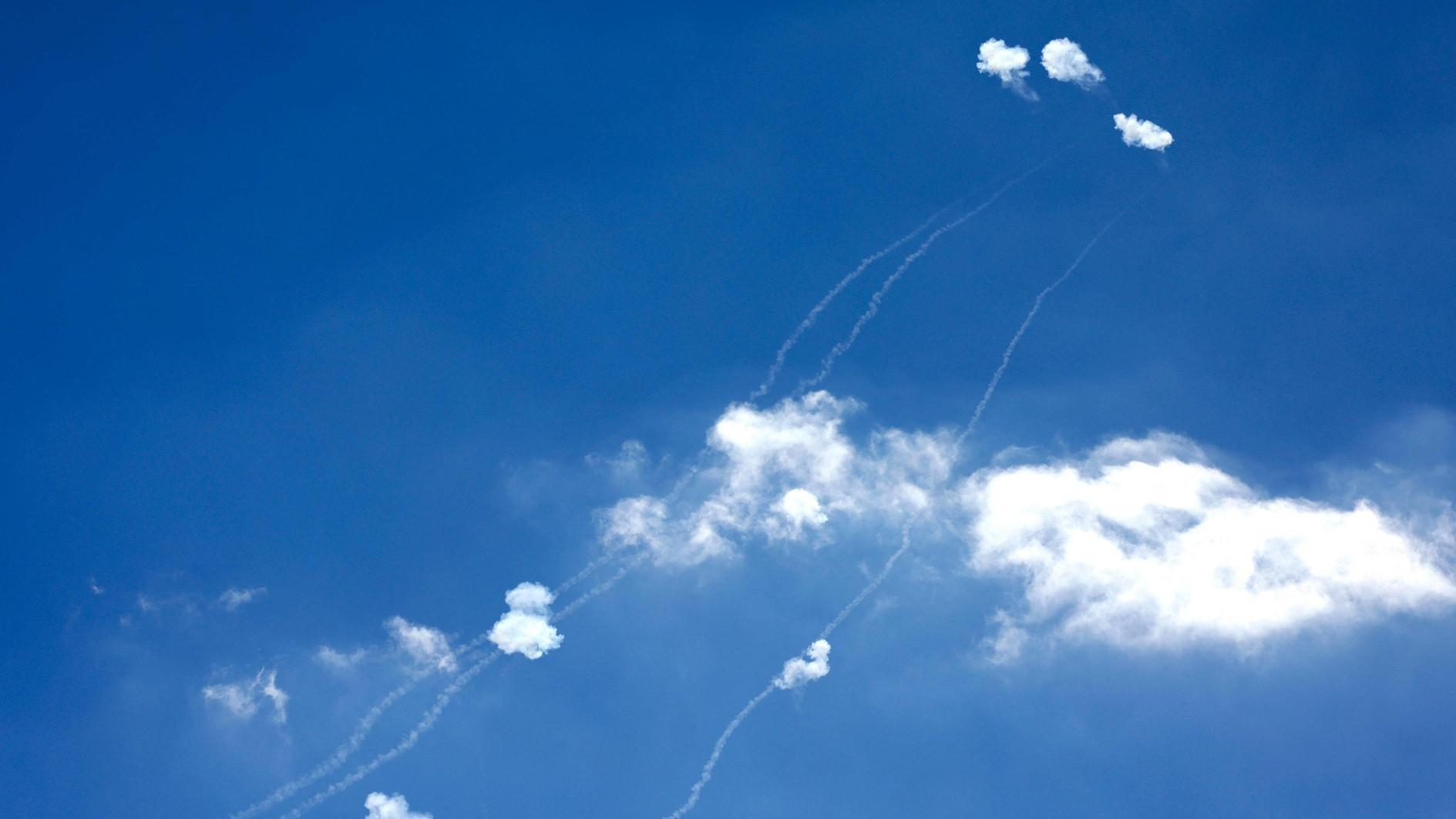
Rockets fired from southern Lebanon are intercepted by Israel's Iron Dome air defence system over the Upper Galilee region in northern Israel on Oct. 2, 2024.
Iran’s missile barrage against Israel triggers a wave of conflicting reports regarding the efficacy of Israel's Iron Dome air defense system.
While some reports claim that Tehran’s deployment of hypersonic missiles for the first time successfully penetrated Israel’s defense network, Iran asserted that the majority of its projectiles struck their intended targets, claiming to have hit numerous military and intelligence installations within Israel with an astonishing 90 percent success rate.
Tehran also said that it destroyed 20 Israeli F-35 fighter jets.
Military analysts have suggested that Iran’s inaugural use of the hypersonic “Fattah” missile, with its ability to alter direction and altitude at extreme speeds, rendered it nearly invulnerable to existing missile defense systems.
John Erath, a defense expert, acknowledged that “like all air defense systems, the Iron Dome has its limitations.” He emphasized that while the system excels at countering small-scale threats, such as those typically encountered by Israel, it may struggle under sustained bombardment. “The heel of missile defense lies in the possibility of overwhelming the system by firing volleys of projectiles across multiple sectors,” Erath remarked.
Iran’s ballistic missile, significantly more advanced than Iran's standard arsenal, boasts a range of 1,400 kilometers and exceptional maneuverability, allowing it to evade missile defense systems by outflanking their interceptors.
In contrast, Israeli officials maintained that the majority of the missiles were intercepted. “Israel’s multilayered air defense system once again demonstrated its resilience, effectively neutralizing Iran’s onslaught,” according to some reports.
Despite the barrage of over 180 missiles launched by Iran, the country reported only minor injuries and limited structural damage, largely due to successful interceptions or the projectiles landing in uninhabited areas.
The U.S. and Britain said they assisted in shooting down the incoming missiles. Explosions also were seen over the skies of Jordan, though it remains unclear who carried out the interceptions.
Israel initially developed the Iron Dome alone after the 2006 Lebanon War, and was later joined by the United States, which has provided its defence know-how and billions of dollars in financial support for the program.
The system has an interception rate of around 90 percent, according to Israeli defence firm Rafael, which helped design it.
The Iron Dome is one part of Israel's multi-tiered missile defense systems and is designed to intercept short-range rockets at a distance of up to 70 kilometers (43 miles).
Each Iron Dome battery is made up of three main sections: A radar detection system, a computer to calculate the incoming rocket's trajectory and a launcher that fires interceptors if the rocket is deemed likely to hit a built-up or strategic area.
It sits alongside other missile defense systems like the Arrow, which counters ballistic missiles, and David's Sling, for medium-range rocket or missile attacks.
Each Iron Dome interceptor costs $40,000 to $50,000 to produce, according to the Washington-based Center for Strategic and International Studies.
The think tank estimated that a complete system, including the radar, computer and three to four launchers, each containing up to 20 interceptors , costs around $100 million to produce.
The Iron Dome is one of the strategic pillars of the U.S.-Israeli alliance that has been followed by successive Democratic and Republican administrations.